Most of my star gazing ventures have been in an attempt to woo a young gentleman. When I say gentleman I mean, some fella who I could get mildly drunk enough off a $10 bottle of Kristov vodka, or bored him to a point that his only relief was to kiss me.
I tell ya, I was a smooth operator when I was younger!
I didn’t get many kisses either!
But in all seriousness there’s a certain calm when I star gaze, sober or drunk. I remember my father showing me constellations when I was younger, and telling me how early Maori would use them and how different the stars are in NZ to the rest of the world. I was in awe of these little dots in the sky.
Obviously as I have grown older, I have learnt a few things. Firstly Kristov is not a nice vodka, make good life choices kids! and secondly, NZ’s stars are not ‘different’ per se, its just that the southern night sky contains a greater range of interesting features than does the northern sky.
I also learnt that my lack of mathematical knowledge would mean that I couldn’t pursue a career in Astronomy, I could however, attempt to photograph the night sky.
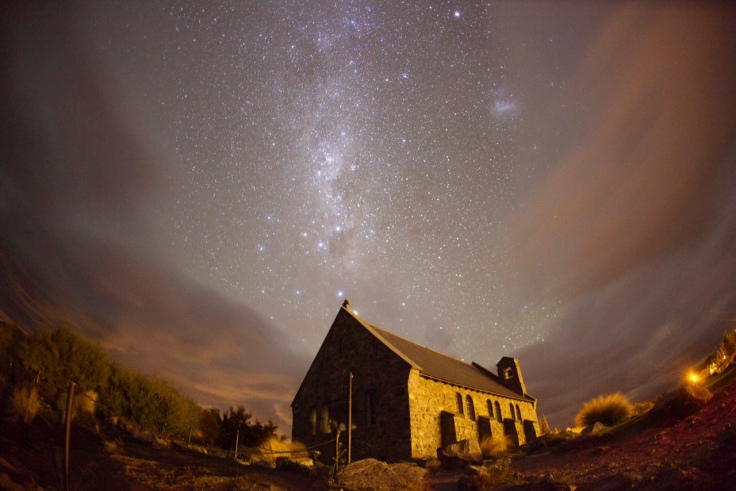
Why study Stars?
Astronomy is the scientific study of celestial objects (such as stars, planets, comets, and galaxies) and phenomena that originate outside the Earth’s atmosphere (such as the cosmic background radiation).
It is concerned with the evolution, physics, chemistry, meteorology, and motion of celestial objects, as well as the formation and development of the universe.
Astronomy is one of the oldest sciences.

Astronomers of early civilizations performed methodical observations of the night sky, and astronomical artifacts have been found from much earlier periods. However, the invention of the telescope was required before astronomy was able to develop into a modern science.

Historically, astronomy has included disciplines as diverse as astrometry, celestial navigation, observational astronomy, the making of calendars, and even, at one time, astrology, but professional astronomy is nowadays often considered to be identical with astrophysics.
- Observational astronomy is focused on acquiring and analyzing data, mainly using basic principles of physics.
- Theoretical astronomy is oriented towards the development of computer or analytical models to describe astronomical objects and phenomena.
The two fields complement each other, with theoretical astronomy seeking to explain the observational results, and observations being used to confirm theoretical results.
Amateur astronomers have contributed to many important astronomical discoveries, and astronomy is one of the few sciences where amateurs can still play an active role, especially in the discovery and observation of transient phenomena. Maybe you could find a star and have it named after you? ‘Alana Nebula’ has a catchy ring to it I reckon!
The most frequently studied star is the Sun. The Sun is not considered a variable star, but it does undergo periodic changes in activity known as the sunspot cycle.
The study of stars and stellar evolution is fundamental to our understanding of the universe.
Where can I star gaze?
The most obvious answer would be to go outside on a clear night and look up (duh!). On a clear night, we can see quite a lot! Using this Evening Sky chart from the Royal Astronomical Society, you can see interesting objects in the night sky during different months of the year (note: it does get updated every month, so make sure you come back every month to get an updated chart).
Here in Dunedin though, we have two options outside of the obvious :
- The PERPETUAL GUARDIAN PLANETARIUM, which is run though and found at the Otago Museum, This is more of a show than anything but is a great way of seeing the night sky specific for Dunedin, in a warm comfy room.
and
- The Beverly-Begg Observatory which is run through the Dunedin Astronomical Society as part of the Royal Astronomical Society of New Zealand. These guys only open to the public on Sundays but have a working telescope so its more hands on astronomy.
Personally, I say to go both. They wont break the bank and you are guaranteed to see some cool ‘stuff’.
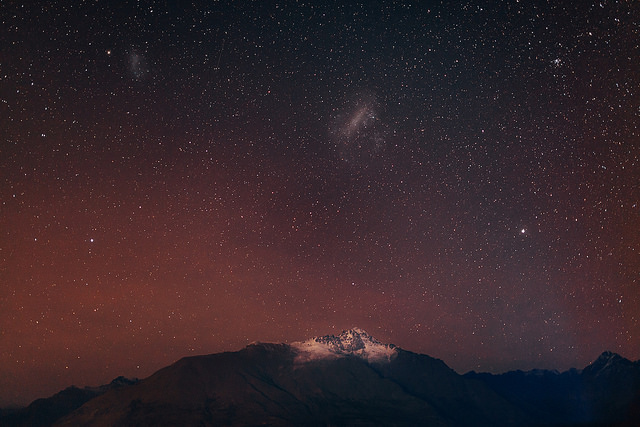
What can I see?
Easy answer: stars and shit (stuff)!
The southern sky claims the three brightest stars (Sirius, Canopus, and Alpha Centauri) and the best examples of almost every type of astronomical object. New Zealand also has a superb view of the Large & Small Magellanic Clouds, two galaxies visible to the naked eye that are too far south for northern hemisphere viewers.
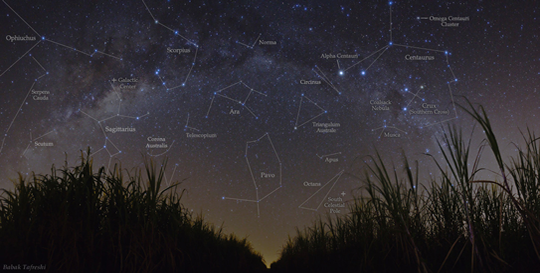
The ole Southern Cross:
Our most famous constellation is Crux or the Southern cross. Crux is the smallest constellation in the sky and yet is the most famous group of southern stars. It is a kite-shaped cluster of four bright stars (and one not so bright) all within 16 degrees of each other in the sky. In the course of 24 hours the Cross appears to make a complete circuit in the heavens around a point known as the South Celestial Pole. The mid-point of the line extending from the long axis of the Cross to the bright star Achernar is the directly south.
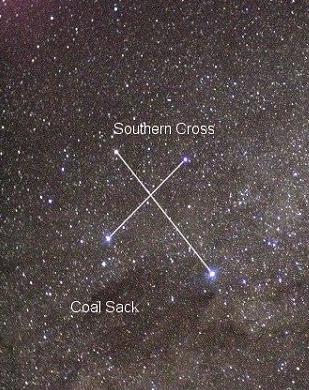
Milky Way:
Stretching across the southern sky is the Milky Way. This is our own disc-shaped galaxy and when we look at the band of light we are looking ‘edge on’ toward the centre of the galaxy. Apart from the Large Magellanic Cloud, the Small Magellanic Cloud, and the Andromeda Galaxy, all the stars we see in the sky with our eyes are within the Milky Way Galaxy. The borders of the Milky Way Galaxy as we see it are irregular and the Milky Way itself is patchy in parts. One object, which has the appearance of a dark ‘hole’ in the sky, is a cloud of cosmic dust about 600 light years away ,it is known as the Coal Sack. This opaque cloud is next to and nearly as large as the Southern Cross and hides the stars lying behind it.
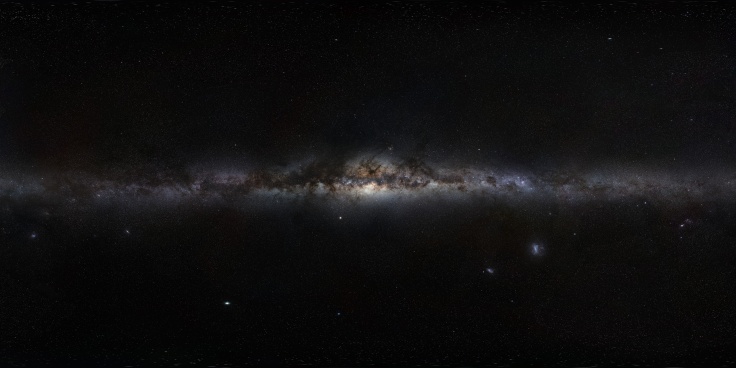
These are just a few example you can see with your eyes! Once a telescope gets involved things get real!
There is so much more I could tell you about astronomy but I feel it is a journey that you need to go out and explore yourself! You never know you may stumble across a new galaxy or star and have it named after yourself!
The great thing about astronomy is that is doesn’t have to cost an arm and a leg to get into and is a great activity to do with young kids (or young at heart). On a clear night, take a blankie, some hot cocoa (or a bottle of wine, but don’t drink drive), some nibbles and let the sky tell you its story!
I recommend heading here, if you want any further information specific to our southern skies!
Thanks for reading,
Till next time
References:
http://nzastronomy.co.nz/operators/dunedin-astronomical-society
https://en.wikipedia.org/wiki/Observational_astronomy
https://en.wikipedia.org/wiki/Astronomy
Photo credit: Tekapo Church, Telescope and Queenstown: Authors own images
The southern sky: Sourced under the creative commons license.
Sourced under the creative commons license: Ptolomy and Astronomy, 1503: https://upload.wikimedia.org/wikipedia/commons/8/80/Ptolomy_and_Astronomy%2C_1503_Wellcome_L0012387.jpg
Crux: By No machine-readable author provided. Alain r assumed (based on copyright claims). [GFDL (http://www.gnu.org/copyleft/fdl.html), CC-BY-SA-3.0 (http://creativecommons.org/licenses/by-sa/3.0/) or CC BY-SA 2.5-2.0-1.0 (http://creativecommons.org/licenses/by-sa/2.5-2.0-1.0)%5D, via Wikimedia Commons
Milky way: By ESO/S. Brunier (http://www.eso.org/public/images/eso0932a/) [CC BY 4.0 (http://creativecommons.org/licenses/by/4.0) or CC BY 3.0 (http://creativecommons.org/licenses/by/3.0)%5D, via Wikimedia Commons

Always into star gazing.. I would agree and go to both places also. Great read.
LikeLike
Thanks for the support mate!
LikeLike
Stunning photos Alana!!!
LikeLike
There are too many stars, what does it all really mean? I’m scared now😨..good work hoov xo
LikeLike
Churr… didn’t know of the Astro places in Dunedin… knew a few of the other things … ie clouds of and such… maybe a piece on the Aurora would have been good.
I have enjoyed this one more than the others.
LikeLike
Am slowly hojng through them all… i see the Aurora..
Churrrrrr…..
LikeLike